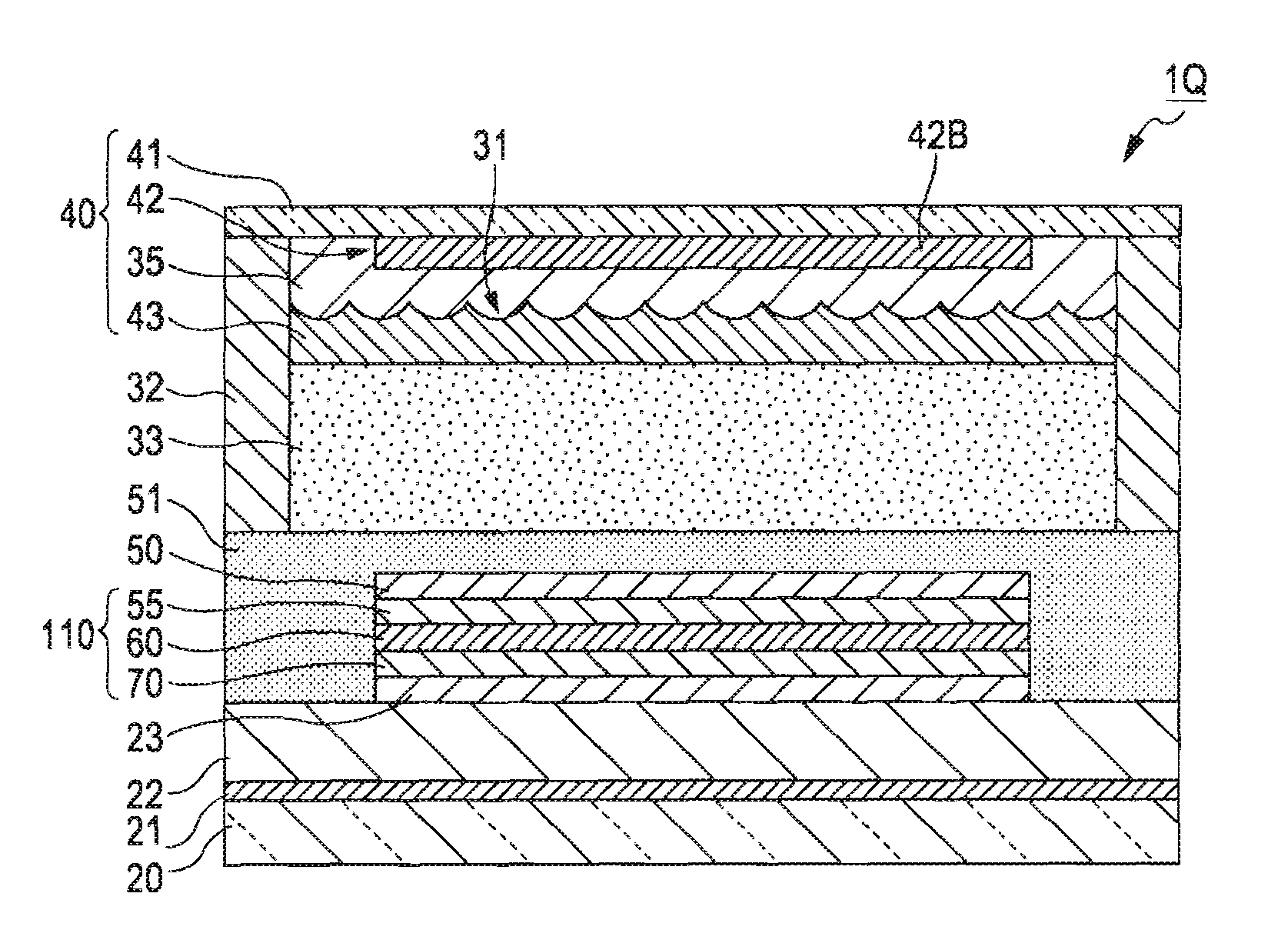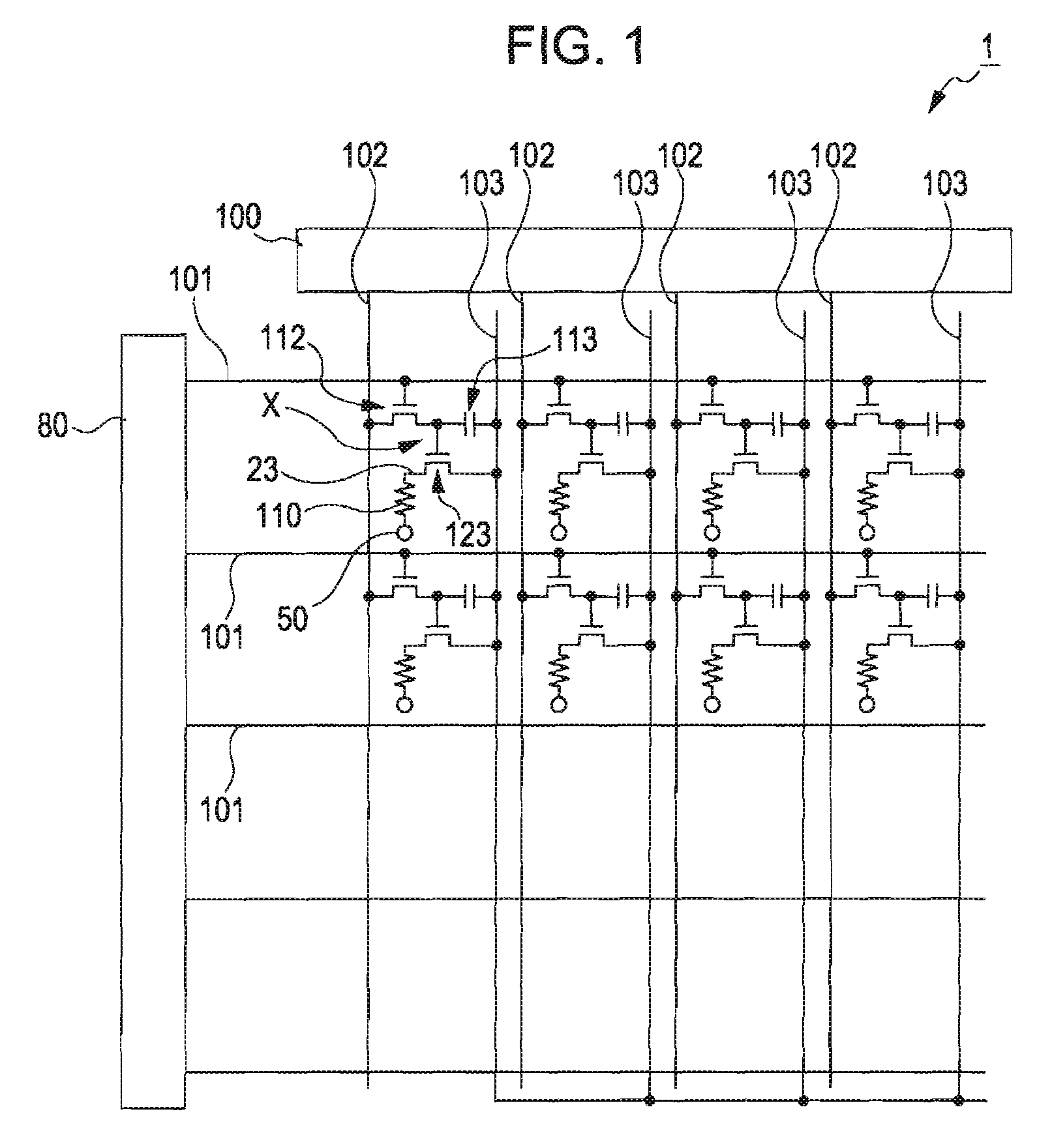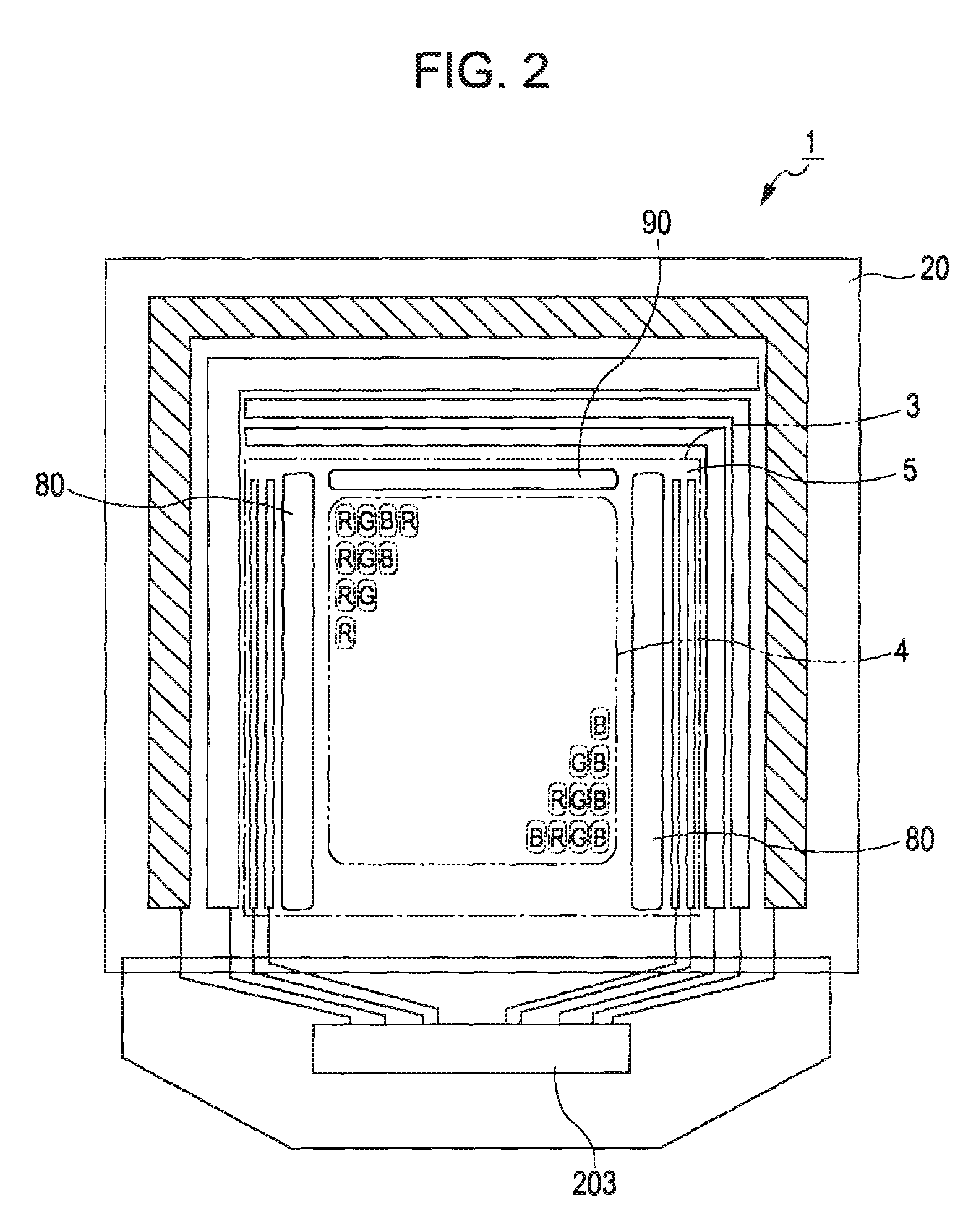Light-emitting device, method of fabricating the same, and electronic apparatus
a technology of light-emitting devices and electronic devices, which is applied in the direction of identification means, instruments, diffusing elements, etc., can solve the problems of difficult planarization process of forming a planarization layer and the like, complicated processes, and inability to obtain directive scattering effects, etc., and achieves high-visibility display
- Summary
- Abstract
- Description
- Claims
- Application Information
AI Technical Summary
Benefits of technology
Problems solved by technology
Method used
Image
Examples
first embodiment
[0081]Next, a structure of a unit pixel group of the organic EL element with respect to a first embodiment of the organic EL element constituting an organic EL panel 1 will be described with reference to FIG. 3.
[0082]In FIG. 3, the pixel electrodes 23, the light-emitting layers 110, and the negative electrodes 50 constituting a part of the organic EL element corresponding to a pixel will be described in detail, and the driving TFT 123 is connected to the pixel electrodes 23. Additionally, the pixel electrodes 23 constituting the organic EL element are each formed for a red pixel XR, a green pixel XG, and a blue pixel XB. As shown in FIG. 1, each pixel is driven by the driving TFT 123.
[0083]As shown in FIG. 3, a unit pixel group Px of the organic EL element (an organic EL device) 1A has the light-emitting layers 110 which are interposed between the pixel electrodes 23 and the negative electrodes 50 on a substrate 20. In addition, a color filter substrate 40 is formed opposite the sub...
second embodiment
[0111]Next, a structure of a unit pixel group of the organic EL element with respect to a second embodiment of the organic EL element constituting an organic EL panel 1 will be described with reference to FIG. 13.
[0112]FIG. 13 is a diagram corresponding to FIG. 3 showing the first embodiment of the organic EL element. About the same reference numerals and signs as those shown in FIG. 3, they are formed of the same configuration and member unless there are specific explanations.
[0113]In an organic EL element 1B according to the second embodiment, a configuration of the color filter substrate 40 is different from that of the organic EL element 1A according to the first embodiment. Specifically, the color filter substrate 40 includes the substrate 41 which is formed of a transparent member such as glass, the color filter layers 42 (42B, 42G, and 42R) which are formed on the substrate 41, a directive scattering layer 35 which is formed so as to cover the color filter layers 42, and the ...
third embodiment
[0115]Next, a structure of a unit pixel group of a organic EL element with respect to a third embodiment of the organic EL element constituting the organic EL panel 1 will be described with reference to FIG. 14.
[0116]FIG. 14 is a diagram corresponding to FIG. 3 showing the first embodiment of the organic EL element. About the same reference numerals and signs as those shown in FIG. 3, they are formed of the same configuration and member unless there are specific explanations.
[0117]In an organic EL element 1C according to the third embodiment, a configuration of the color filter substrate 40 is different from that of the organic EL element 1A according to the first embodiment. Specifically, the color filter substrate 40 includes a substrate 41 which is formed of the transparent member such as a glass material, the color filter layers 42 (42B, 42G, and 42R) which are formed on the substrate 41, the overcoat layer 43 which is formed so as to cover the color filter layer 42, and a direc...
PUM
 Login to View More
Login to View More Abstract
Description
Claims
Application Information
 Login to View More
Login to View More - R&D
- Intellectual Property
- Life Sciences
- Materials
- Tech Scout
- Unparalleled Data Quality
- Higher Quality Content
- 60% Fewer Hallucinations
Browse by: Latest US Patents, China's latest patents, Technical Efficacy Thesaurus, Application Domain, Technology Topic, Popular Technical Reports.
© 2025 PatSnap. All rights reserved.Legal|Privacy policy|Modern Slavery Act Transparency Statement|Sitemap|About US| Contact US: help@patsnap.com



